The 8 Best Things to See in Toledo, Spain
The first time we came to Spain in 1975, we spent our first days in Barcelona and then Madrid. Both are interesting big cities, with their attractions to be sure. (The Sagrada Familia in Barcelona was barely started then.) But when we made the short train trip from Madrid to Toledo shortly thereafter, that was when the first obvious “wow” factor of Spain kicked in. Even recently, when we made, perhaps, our tenth visit to to Toledo, we are still convinced that this tiny walled city has the most artistic and historical oomph per square meter of any city in Spain – and perhaps any city in the world, with the possible exception of Florence.
Toledo is a very small city and can easily be covered in a long day on foot, if you’re able to handle the sometimes rough cobblestone streets and an occasional steep incline. Many streets of Toledo are too narrow for cars anyway, so there’s really isn’t that much choice.
I should emphasize that this small list of things to do and see in Toledo is just that – a small list. There are lots more things to see. If you’re up to it, be sure to climb the tower of San Ildefonso to get a look over the rooftops. Or you can also be sure to linger in front of El Greco’s View and Plan of Toledo in the El Greco Museum.
Table of Contents
The Cathedral of Toledo
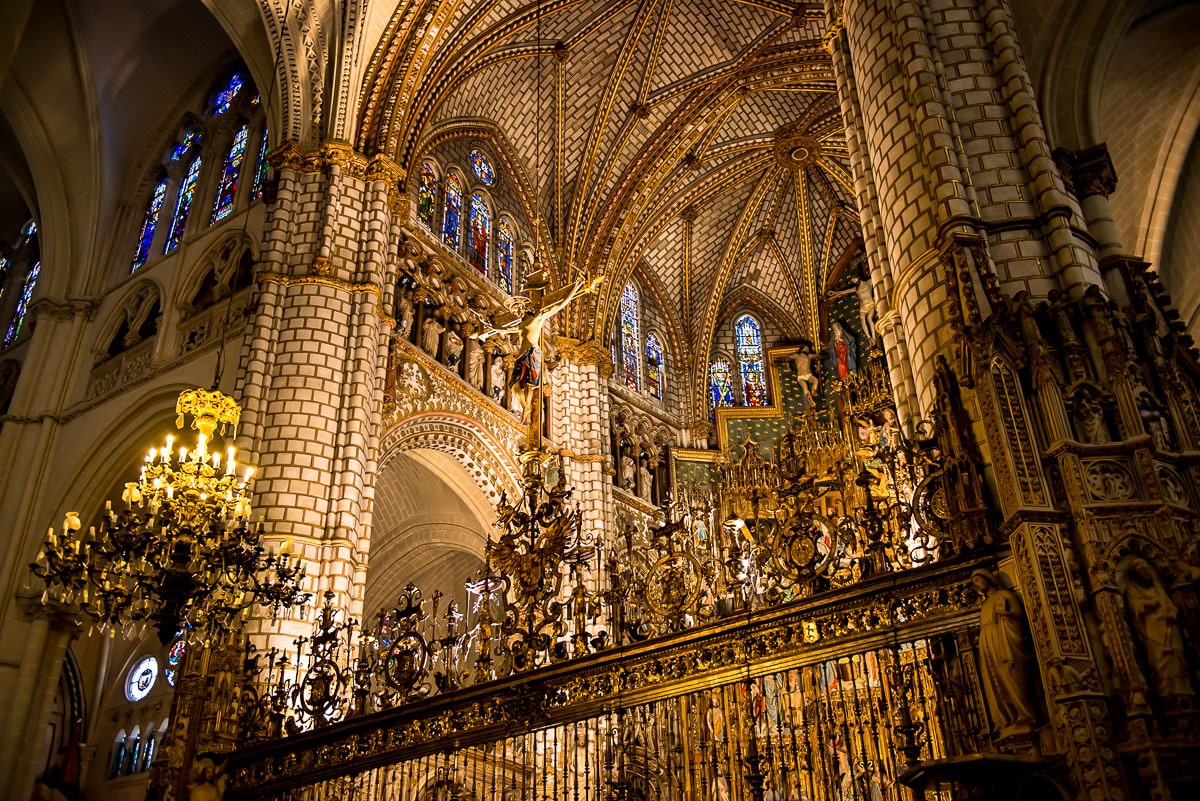
The Cathedral of Toledo, is the subject of a post of its own, and deserves a lengthy visit on its own. Some friends that we visited Toledo with on this trip spent three hours just in the Cathedral and admitted to not seeing it all. Yes, it’s that big, and its marvels are that many.
There are many attractions of note you can see in our post on the Cathedral, but two of our favorites are the Transparente and the choir. The Transparente is a unique feature that we’ve never seen the like of in any other church we have visited. A mixed media of sculpture and painting starts on the floor of the apse and leads the eye up and up until the sculpture gives way to frescoes and then a window that lights the entire work that represents the ascent into heaven.
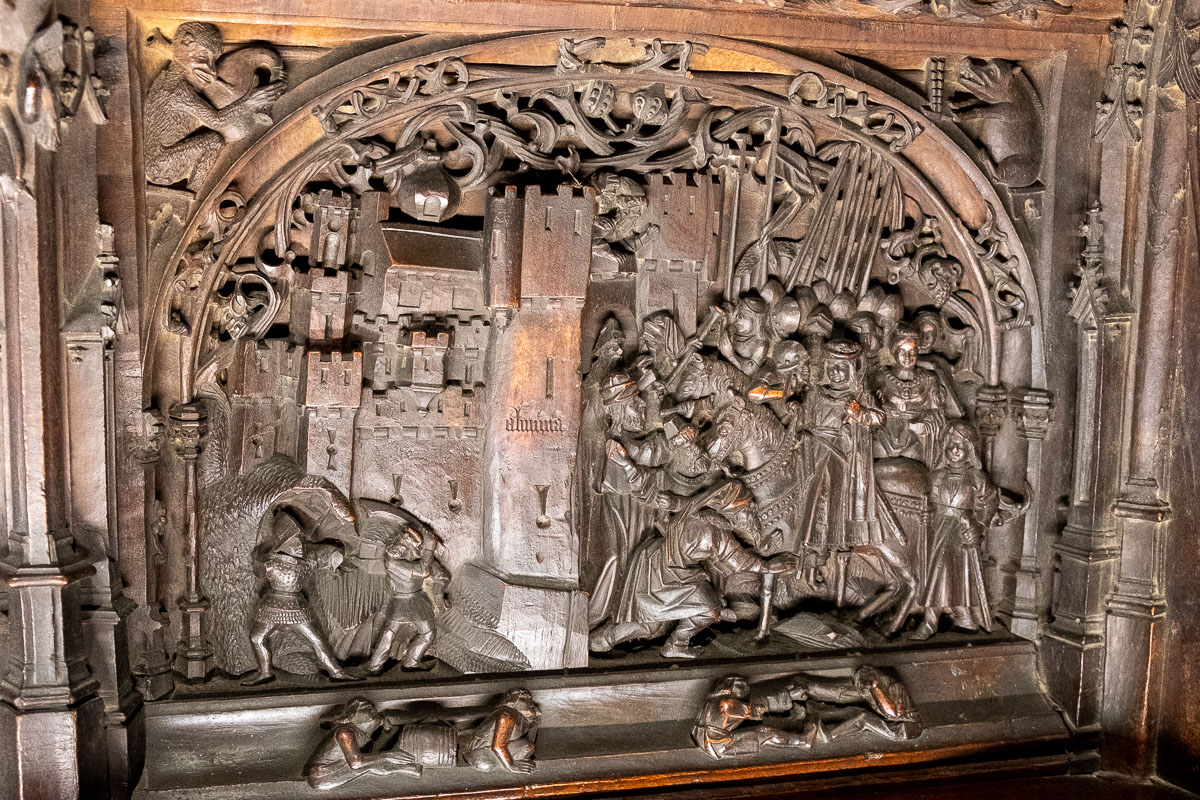
The enormous choir is distinguished by the exceptional carvings of the seat backs and the panels above the seats. On each seat back is a scene from the Catholic reconquest of Spain from the Moors, and culminates with the scene of the fall of the castle at Granada, the last Moorish city to fall to the Christians.
The Museum of El Greco
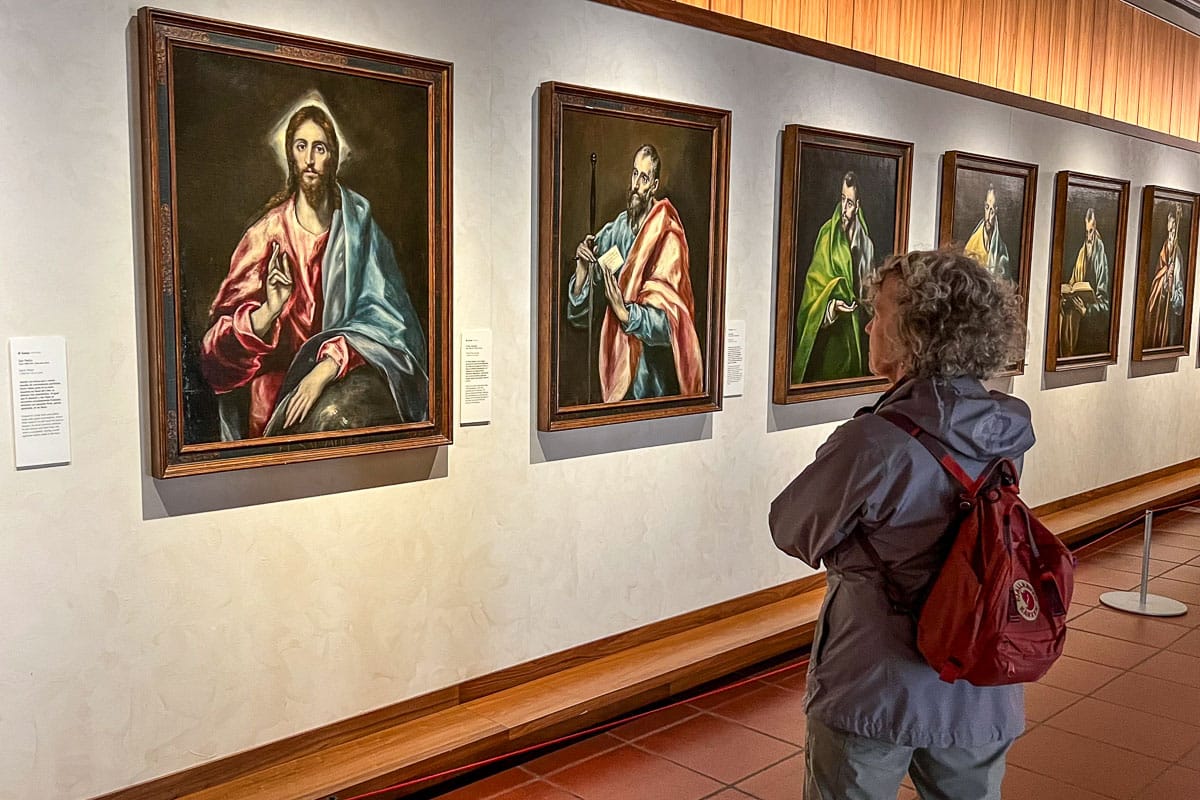
The small El Greco Museum, which has grown out of the old building which was actually El Greco’s home, houses a small collection of his paintings, in particular his series of the apostles. Here you can get very close to his smaller works and marvel at his revolutionary techniques of brush stroke, color, perspective, and elongation of figures. When you have this as a base for your appreciation of El Greco, his much larger works in The Prado, the Toledo Cathedral, and The Burial of Count Orgaz in Toledo’s Santo Tomé are rendered even more poignant.
Mosque of Cristo de la Luz
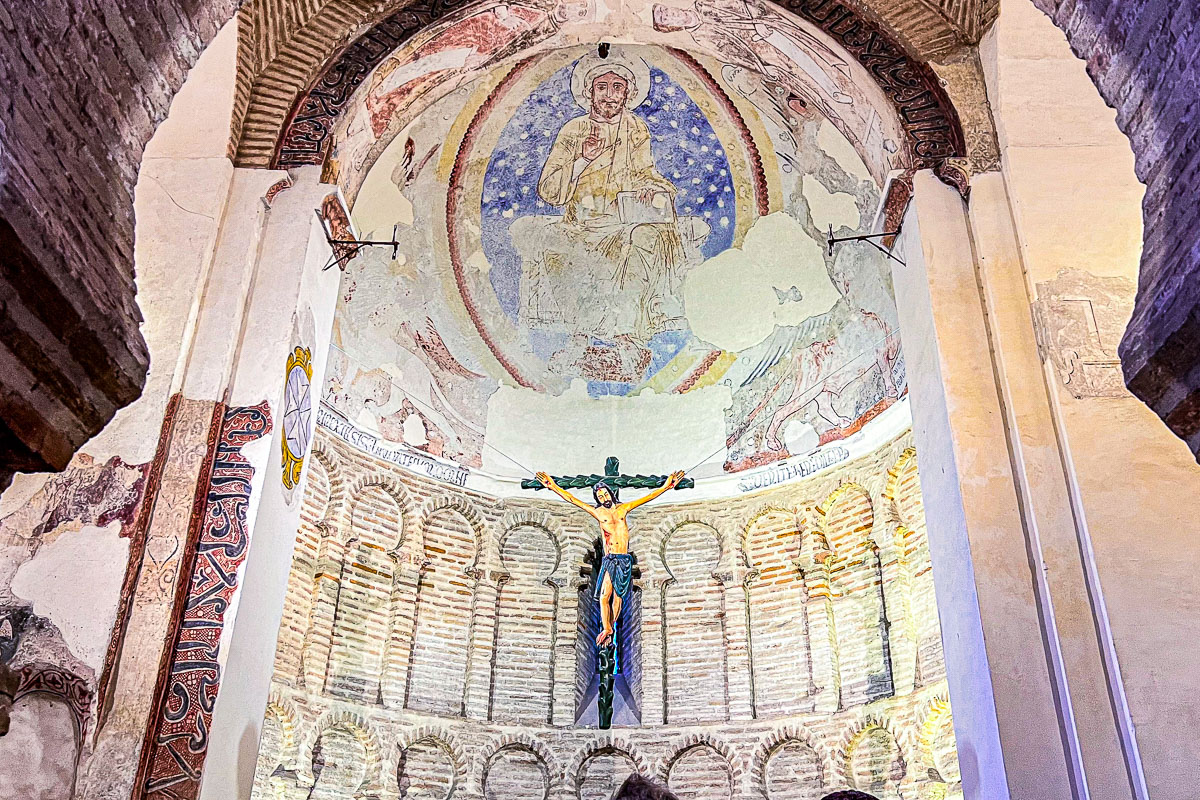
Originally built as a mosque in the year 999, this small building shares evidence of its original purpose with a later conversion into a Christian church by King Alfonso VI after the reconquest of Toledo in 1085. It’s a tiny structure, only about 8 x 8 meters, and so doesn’t need much time to see it. I particularly like the crude two-dimensional Christ in heaven painted on the dome, as well as the Arabic script which remains on the pillar to the left.
Monastery of San Juan de los Reyes
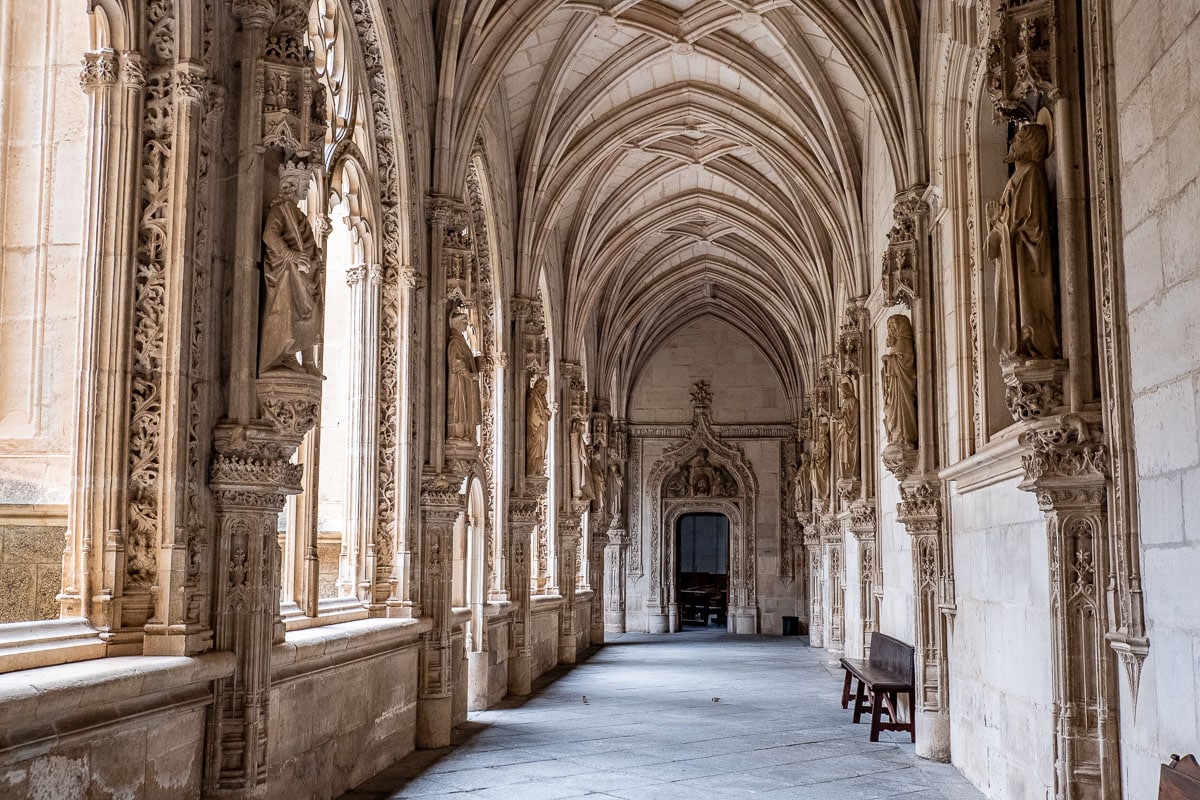
The Monastery of San Juan de los Reyes was originally commissioned by Fernando and Isabel to commemorate the birth of their son Prince John and the consolidation of their united kingdom. It was also intended to be their mausoleum. (They later decided to be buried in Granada after the conquest of that city in 1492.)
It is relatively new, by Toledo standards, having been started in 1477 and completed in 1504. It was severely damaged during the Napoleonic wars of the early 1800s. Restoration was begun at the end of the 19th Century but only completed in the 1960s.
Synagogue of El Transito
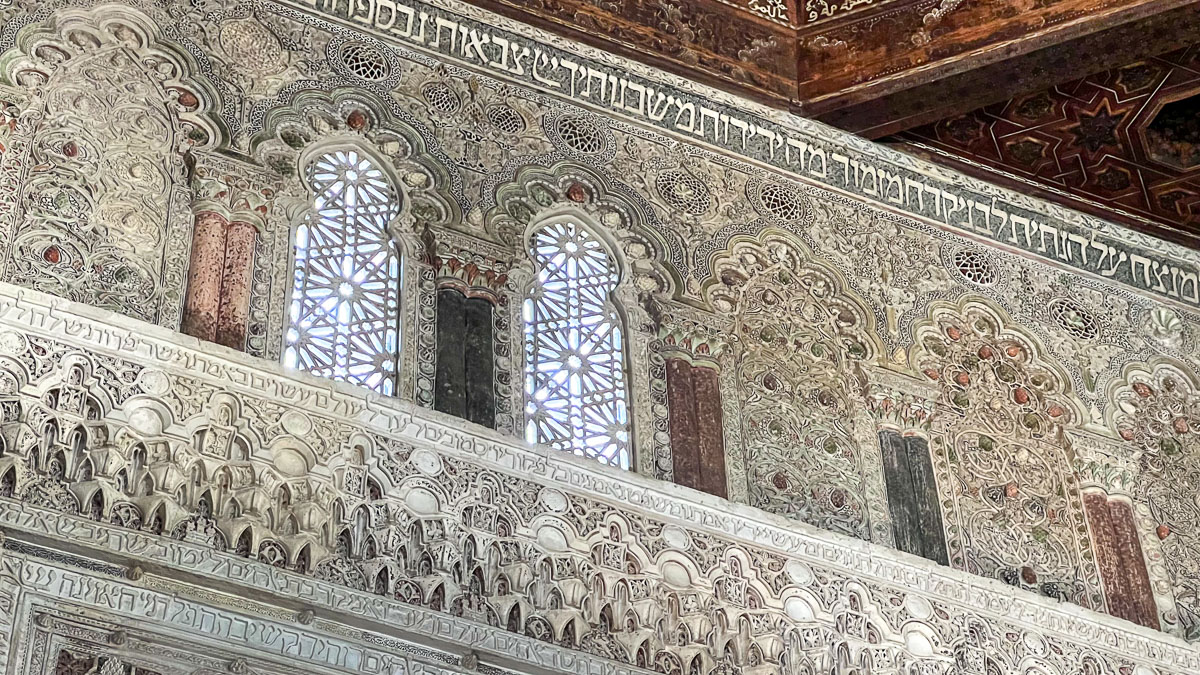
The Synagogue of El Transito was originally built in 1357 as a private place of worship for the Jewish counselor to King Pedro of Castilla, Samuel ha-Levi Abulafia. It was converted to a church after the expulsion of the Jews from Spain in 1492, and like San Juan de los Reyes, was damaged during the Napoleonic Wars when it was used as a barracks. The synagogue became a museum in 1910, and is known today as the Sephardic Museum. When you tour the small museum with its Jewish artifacts, note the stucco decoration, Mudéjar style, and women’s gallery. The Hebrew script around the ceiling and the carvings are reminiscent of Moorish palaces and mosques throughout Spain.
Synagogue-Church of Santa María la Blanca
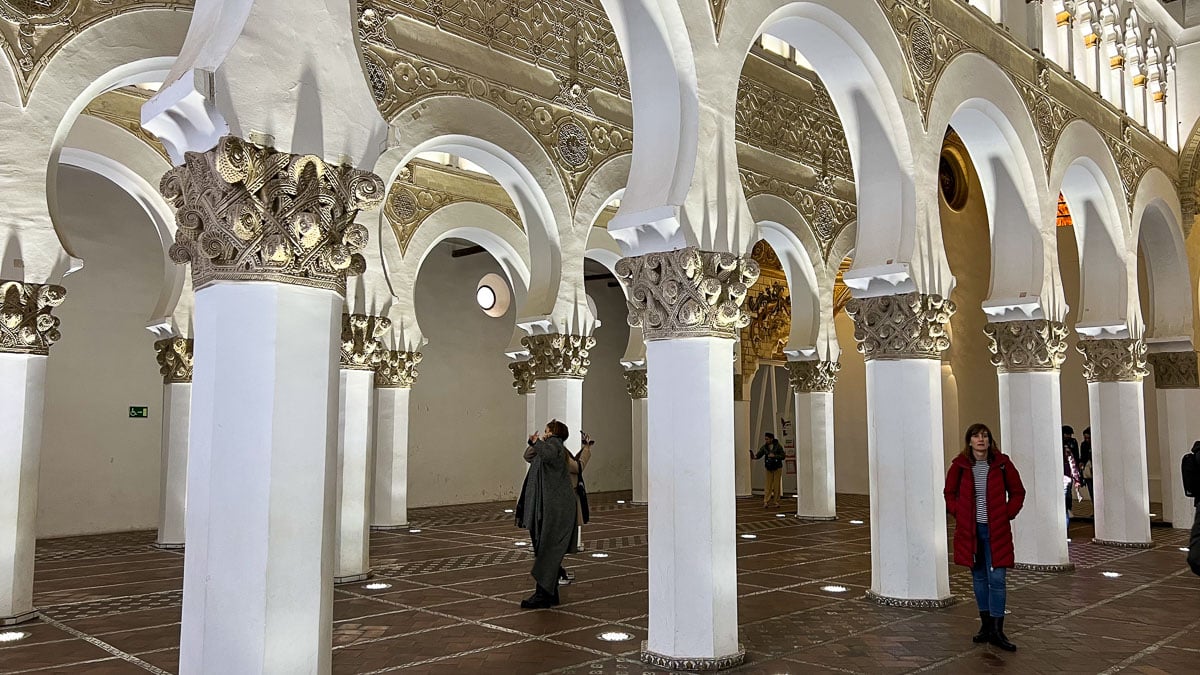
Like El Transito, Santa María la Blanca (Holy Mary the White), started life as a synagogue built in the Mudejar style in the early 13th Century. It, too, was appropriated by the Catholic Church, albeit earlier than El Transito, i.e. after persecution of the Jews in the late 14th Century. Today, take special care to admire the carved capitals of the pillars and the simple Moorish arches. There is also a Renaissance style apse added in the 16th Century in the former location of the synagogue’s ark.
The Visigothic Museum
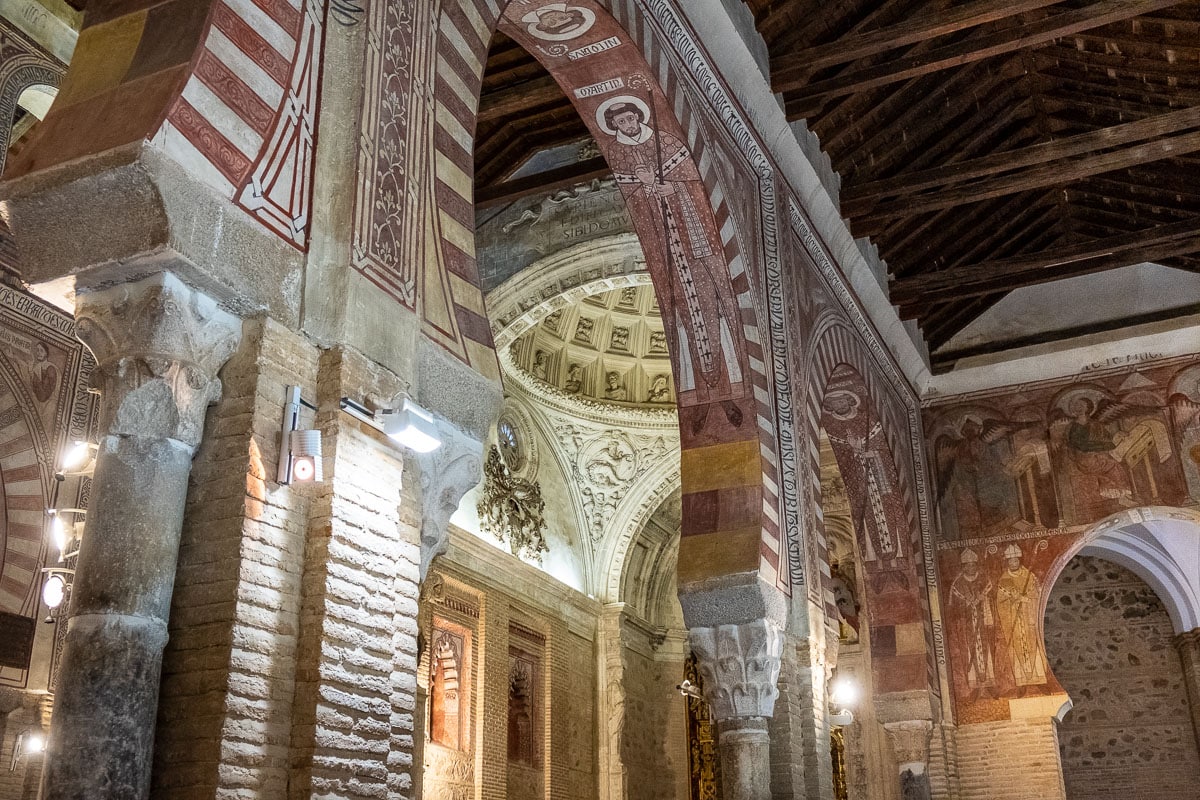
What was formerly the Church of San Román has been repurposed as the Visigothic Museum. The church was built in the Mudéjar style in the 13th century on the site of an old Visigothic structure and probably an ancient Roman building. Today, it serves as a reminder that the Iberian Peninsula was under Visigothic control until the Moorish invasion of 711, and that Toledo was, in effect, the Visigothic and Christian capital of the region.
There are numerous archaeological pieces on display dating from the 6th to the 8th centuries, as well as paintings, documents and precious metalwork, and funeral offerings from nearby the Carpio de Tajo necropolis. The frescoes that cover the walls of the church are Romanesque and date from the 13th Century.
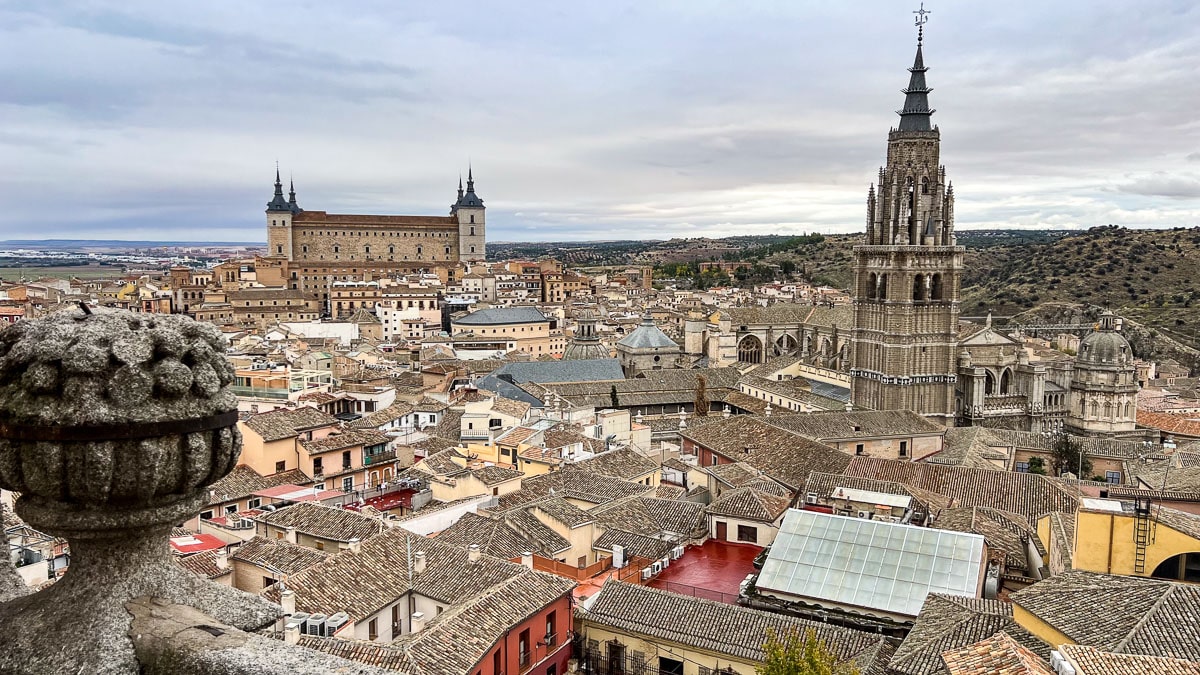
The View of Toledo from the tower of San Ildefonso
San Ildefonso is the Jesuit church in Toledo and is yet another Baroque blot on the artistic history of earlier eras of Toledo. The church dates from the 17th Century and, if you like that sort of thing, is worth a quick tour. But the best reason to visit San Ildefonso is to climb the 131 steps up the tower to get a look over the Cathedral and Alcazar (Castle) of Toledo. It doesn’t compare to El Greco’s painting of a Toledo overlook, but it’s nice to get some sort of perspective on the labyrinthine warren that is this city.
How to get to Toledo from Madrid
Toledo is an easy day trip from Madrid. There are trains at least every hour from Madrid Puerta de Atocha station that take just over 30 minutes to arrive at the beautiful Toledo train station. Train tickets are about €22-24 for a round trip. From the station, it’s easiest to get up to the center of town at the Plaza Zocodover by taking a taxi. A taxi trip to and from the train station to Zocodover will run you about €5 each way.
Hotels in Toledo
We usually use Booking.com to get hotels in Toledo. Although we didn’t stay overnight in Toledo on this visit, there are plenty of lovely hotels to choose from. Among the highest rated are the Casa de El Greco, the Casa Palacio Rincón de la Catedral, and the La Casa de Sillería.
When you’re thinking of traveling, your first stop should be our Travel Resources page, where we list all the essentials you need to make your travels easier, cheaper, safer, and more fun.
You can also help yourself get ready for your travels by reading our Get Started Planning Your Trip Now page.
We love traveling–with the right gear. We’ve gathered a lot of the stuff we use to make travel more pleasant and efficient all on one page. Shop our Travel Past 50 Amazon page to find our favorite gear. If you purchase something from the store, Travel Past 50, as an Amazon affiliate, may receive a small commission at no extra charge to you. Thanks.
We never leave home without our travel insurance. Nor should you. Search for the travel insurance from Allianz that best meets your needs, whether it be an annual plan or a single trip.
You can see (and buy prints) of most of our travel photos in one place on this page.
Note: This post and other posts on TravelPast50.com may contain paid or affiliate advertising links. As an Amazon Associate we earn from qualifying purchases.
The best retirement investments depend entirely on you and your goals. Don’t dive into anything or let anyone tell…
Copyright © 2024 Retiring & Happy. All rights reserved.








